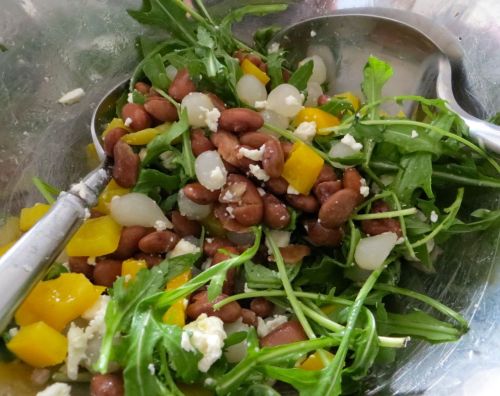Discovering turnips
Oh, turnips. I’m sorry. I clumped you, a humble toot vegetable, into a throw-away category with radishes, bok choy, celery, watercress, and other forgotten produce: vegetables I do not yet understand. I realize that these real foods, born of the earth and sun, must be divine in their own way. Plucked straight from the soil raw or paired with precisely the right spice in precisely the right cooking method, each would be a revelation, I’m certain. But so far, I haven’t come across them in such a setting.
Until, for turnips, today.
I found these at the Charlottesville farmers market on a chilly December Saturday, hanging out with the other less glamorous winter produce. Cabbage. Carrots. Sweet potatoes. Onions. Oh, and kale, which has recently become oddly popular. The other vegetables try not to be jealous, I imagine, but it would be hard not to wonder about the sudden mania. “What did kale ever do to deserve the gushing frenzy? Why not me?” thinks the sad kohlrabi.
I had no idea what to do with these turnips, which is often as good a reason to buy something at the market as any: I’m guaranteed to embark on a kitchen adventure, like it or not. And so I bought them, a bargain $3, including the leaves, which I hacked off immediately. Think mustard greens, a jolt of spiciness.
(Side note: I think these turnips might actually be white Japanese turnips, according to a non-scientific Google search. They certainly didn’t bear the tell-tale purple marks of a typical grocery turnip, and their sweetness and lack of heat seems to be a hallmark of white turnips, too. Being a complete turnip novice, I can’t say for certain, but this is my hunch. If you know, please do confirm or refute this suspicion!)
I tried the turnips first raw, this bundle of pretty bulb-like spheres. Crisp and vaguely sweet, they reminded me of white carrots, the alien-like kohlrabi of our German days, or perhaps the mysterious salad-frequenter radish. Fine, but nothing I would seek out on a quest at the farmers market.
Then I peeled them and chopped them up, and followed a simple recipe for braising in “How to Cook Everything” by the infallible Mark Bittman.
I didn’t quite get braising until today. Why braise when you can sauté?
How naive I have been. Braising takes a bit longer, true, but it melds the flavors and melts the dish in a luscious way that the quick flash of sautéing cannot do.
How to braise? The short of it is: You let the turnips simmer in stock and fat, until softened and imbued with flavor.
What surprised me – shocked me, even – was how luscious these previously crisply stalwart vegetables became. They melted into a silky, nearly buttery consistency, a magical state of matter between liquid and solid. On the plate, they masqueraded as mashed potatoes. The turnips themselves seemed to eek out sweetness, even producing a hint of cinnamon or nutmeg in the background. I so wish I had bought two bundles.
Next time. Lovely white turnips, I won’t make the mistake of underestimating you again.
Braised turnips
Adapted from “How to Cook Everything” by Mark Bittman
– 4-6 smallish white (Japanese) turnips, peeled and chopped
– 1 tablespoon olive oil
– 1/2 cup of vegetable stock
– pepper
Add the turnips, olive oil, and stock to a pan. Bring to a simmer and let simmer with a lid on for 5 minutes or until softened. This is a forgiving recipe, and one you can cook longer or shorter depending on the needs of the rest of the dinner’s dishes. Remove the lid and let the liquid boil off. Mark suggest the requisite pepper and salt to taste, which for me means a few cranks of the pepper grinder and no salt. Eat at once, and marvel at what a turnip can be.



